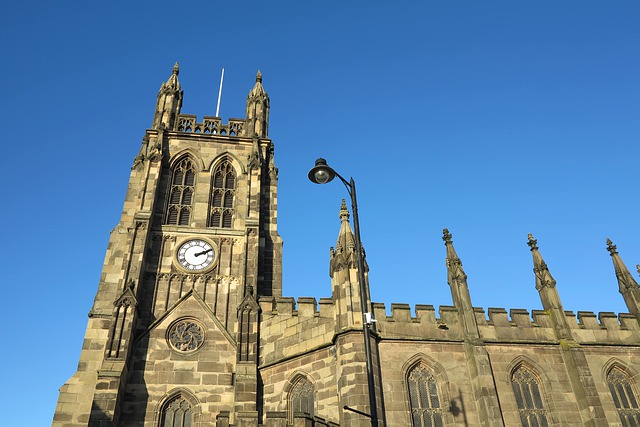By Tim Lambert
Dedicated to Pat Churchill
Early Stockport
Stockport began as a small village. However, in the 13th century, Stockport grew into a town. In 1260 the people of Stockport were given a charter, which gave them certain rights including the right to hold weekly markets and annual fairs. (In the Middle Ages fairs were like markets but were held only once a year and attracted buyers and sellers from a wide area).
In Medieval Stockport weaving cloth was an important industry although there were also the same craftsmen found in any town such as blacksmiths, carpenters, coopers, and tailors.
Nevertheless to us, Medieval Stockport would seem tiny with no more than 1,200 people. Despite the small size of the town in 1487, Sir Edmund Shaa left money in his will to found a grammar school in Stockport.
Like all towns in those days, Stockport suffered from outbreaks of plague. It struck in 1606 and in 1665 but each time the town soon recovered.
By the year 1700, the population of Stockport was probably still less than 2,000. In the 18th century, Stockport became known for its silk weaving industry and several water-powered silk mills were built.
Meanwhile, the town grew much larger, and by 1780 Stockport had about 5,000 people. In the late 18th century the town was described as large and handsome and it continued to grow rapidly. In 1801 the population of Stockport was over 14,000.
Modern Stockport
Like all towns in the early 19th century, Stockport was dirty, crowded, and unsanitary. There were epidemics of Cholera in Stockport in 1832 and in 1849.
However, during the 19th century conditions in Stockport improved. In 1820 a gas company was formed and in 1827 Stockport Waterworks opened. At first, it was run by a private company but the corporation bought Stockport Waterworks in 1899). In 1833 a new infirmary was built.
Stockport railway viaduct was built in 1840 and from 1880 there were horse-drawn trams from Stockport to Manchester. From 1902 they used electricity. Meanwhile, in the 1850s and 1860s, sewers were dug under Stockport and Vernon Park opened in 1858. During the 19th century, the old industries of cotton and hat-making flourished in Stockport.
However, in 1852, there was a riot in Stockport. There were many Irish immigrants in the town and immigration caused tension. So did religious bigotry. (The fact that the Irish were Roman Catholics caused ill feeling). On 28 June 1852, a fight took place between English and Irish at a pub called Bishop Blaize (now called The Gladstone). On 29 June violence broke out in St Peters Square and the rioters ransacked Irish homes on Rock Row. However, troops restored order.
A new Town Hall was built in Stockport in 1908 and the first cinema opened in 1912. The first public library in Stockport opened in 1875 but Stockport Central Library was built in 1913. Then in the 1920s, the first council houses were built in Stockport. Many more were built after 1945.
Stockport was bombed in 1940-41 but escaped serious damage. However, during the 20th century, the old industries of cotton and hat-making in Stockport declined and eventually ceased. However, engineering became an important industry.

The Merseyway Shopping Centre opened in 1965 but it was refurbished in 1995. However, in 1967 the Stockport Air Disaster happened when a plane crashed killing 67 people.
One of the landmarks in Stockport, the Pyramid was built in 1992, and Hat Works the museum of hats opened in Stockport in 2000. In 2024 the population of Stockport Borough was 295,000.